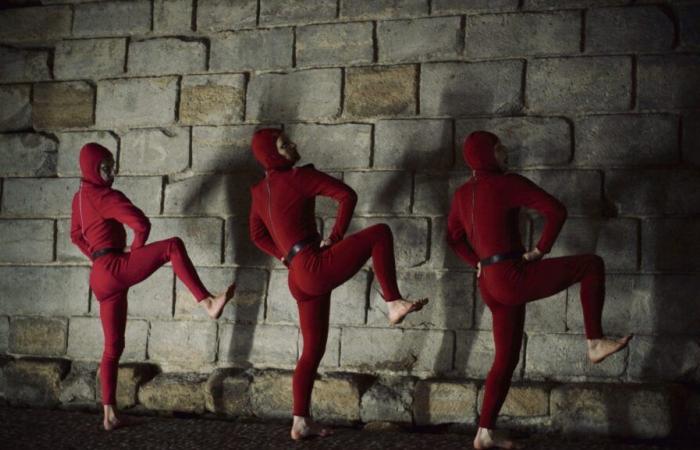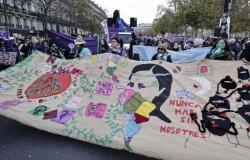In the exhibition dedicated to them by the Louvre until February 3, and which spectators of this performance are invited to browse, the “Figures du fou” are born at the margins, in grotesque hybrids which tease, in the borders of the pages, secular or sacred texts from the second half of the 13th centurye century.
The enlightening exhibition explores a great history of eccentricity in the iconographies of the 13th centurye they have XVIe century: we see the madmen establishing a social role soon functional in the society of their time, before creating a rarer and more tragic image in the Age of Enlightenment.
It’s not in front the Mona Lisanor the Victory of Samothracein front of which one of the performers of Jérôme Bel and Estelle Zhong Mengual danced in 2023, that François Chaignaud deploys his Little Players. Instead, the choreographer, invited in turn by the museum and the Autumn Festival, takes over the medieval Louvre, an archaeological base which does not exhibit any work, but allows you to see the walls and the keep of the castle which once stood at the place of the palace.
The public enters slowly, descending the staircase alone to discover a world populated by bewildered characters clad in pink or scarlet jumpsuits.
Balloon and mirror game
In this underground escaping the light of day – Chaignaud, by calling it “gut”, makes it an abject space – these dilettante and poetic spirits wander, play or hang out. The first throw a large balloon back to each other; a second modulates its breath, lying on the stone, before climbing onto stilts to begin to sing; others languish at the top of a rampart, revealed by a play of mirrors.
The air swells and leaves Abigail Fowler’s structures withering, making bubbles in the small pools of water where vibrators float like little anemones. It fuels the lyrical songs which soar into the heights of the stone gallery, and infiltrates a concertina to only emerge a surreptitious whistle, below the note.
« The figure of the madman allows us to nurture a “little player” practice » of our arts and their possible virtuosities”explains the choreographer. In this performance thought out and constructed with a string of performers with multiple talents, no big show but a little game, which often begins below the belt, works the body with tiny sensations, like small itches, and lets its ideas be born without overhang, through free and playful associations. Those who would like, today, to reenact the trial of a “degenerate” art will surely abhor these deviant figures who move in the dark space of taboos.
One of the strong ideas articulated in the exhibition tells us that the madman was not always completely mad, that a fog hung, for a long time, on the border which separates real madness and performed madness. The indolence of the characters portrayed by Chaignaud is perhaps real, perhaps feigned. Claiming this vagueness and this strangeness, not obeying the aesthetic order, this is the last breath of political air offered by these Little Players.
Little players, by François Chaignaud, continuously from 7:30 p.m. to 11:30 p.m., November 14 and 16 at the medieval Louvre, Paris 1isas part of the Autumn Festival in Paris.
Closer to those who create
Humanity always claimed the idea that culture is not a commoditythat it is a condition of political life and human emancipation.
Faced with liberal cultural policies, which weaken the public service of culture, the newspaper reports on the resistance of creators and all cultural personnel, but also on the solidarity of the public.
Unusual, daring and singular positions are the hallmark of the newspaper’s culture pages. Our journalists explore behind the scenes of the world of culture and the genesis of the works who make and shake up the news.
Help us defend an ambitious idea of culture!
I want to know more!






